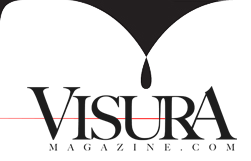IN 1990, I MOVED FROM THE DOMINICAN REPUBLIC to Monterrey, Mexico, my mother’s home country. Sixteen years later I was still searching for my Mexican identity. After two years of photographing, I came across the work of the Mexican photographer Eugenio Espino Barros. In a way, it was seeing how he understood and organized both urban and natural spaces that I became compelled to pursue a body of work that dealt with the Mexican landscape.
While traveling around the outskirts of the nine cities of the Monterrey Metropolitan Area (MMA) it became obvious that a major transformation in the landscape was taking place. Both private and public sectors were enforcing it and thousands of serial houses were being built. The economic strategies, implemented with a new publicly financed plan, had deliberately excluded urban growth from the metropolitan planning regulation. This allowed developers to design urbanization for profit rather than for the community’s well-being. Due to this plan the construction of roadways, parks and proper public transportation systems were far from becoming a reality for the future inhabitants.
Upon this realization I found a need to photograph the issue. Initially I had my doubts regarding how or why I should document both the urban growth and altered landscapes. Unsure of the outcome, I started by systematically documenting the new suburban areas. This resulted in the first series that comprises the project Suburbia Mexicana.
The first series, Fragmented Cities, seeks to represent serially built homes almost as they would appear in a commercial brochure; metaphorically, I explore the ideal of homeownership. The second series titled, Lost Rivers, explores the environmental problems that stem from excessive urban and suburban development such as drying rivers and streams. The third series, Urban Holes, is a reconstruction of abandoned spaces in downtown Monterrey. Meanwhile, in the fourth series, The Other Distance, I aim to connect the wealthy with the new-middle and low class urbanization models. In 2009, as part of this last series, I returned to the housing developments and photographed the people of Juarez where—as a result of urbanization—the population has tripled since 2002. Photographing this city has allowed me to encounter the humanity of these serial structures. Juarez also happens to be the hometown of my mother’s family.
The different aspects of Suburbia Mexicana propose alternate narratives, which depict a global issue from a local perspective. I feel that my commitment as a photographer is not to denounce our need for a household, but rather to point out the struggle we face following the ideals of a capitalistic system while striving for fairer cities in which to live.
by Alejandro Cartagena
www.alejandrocartagena.com





